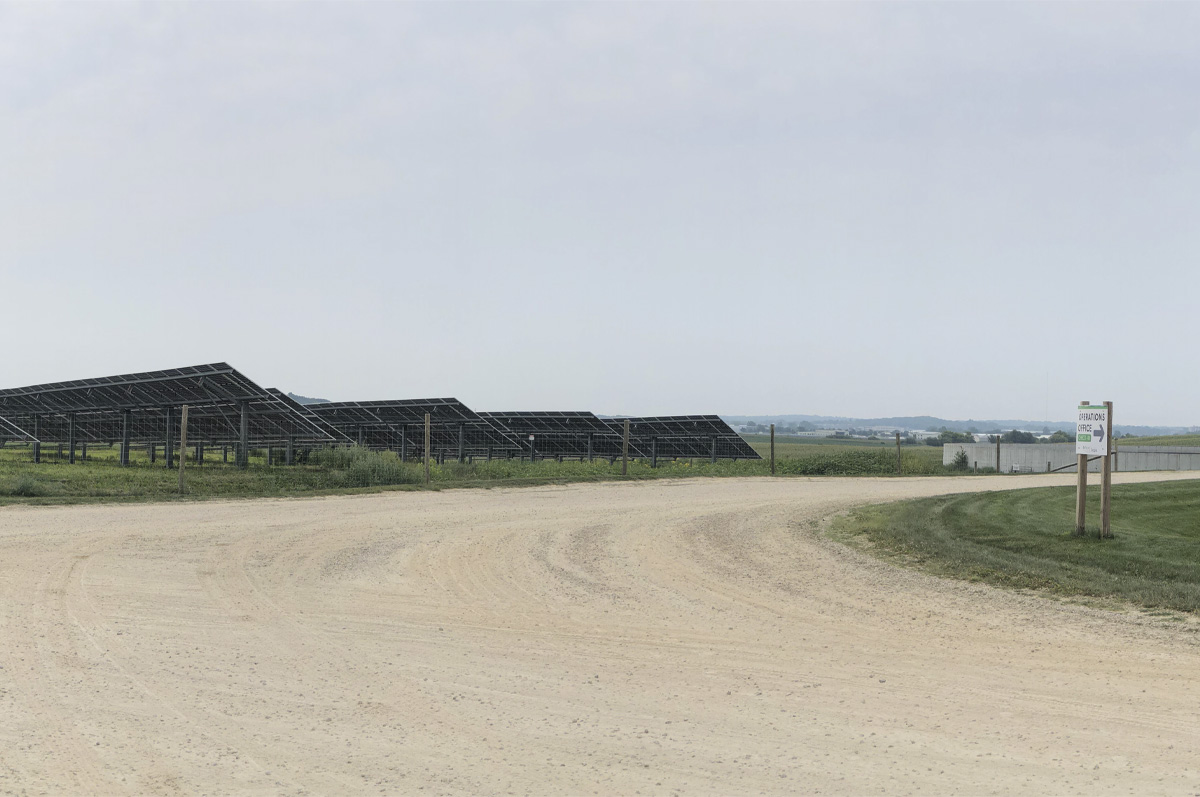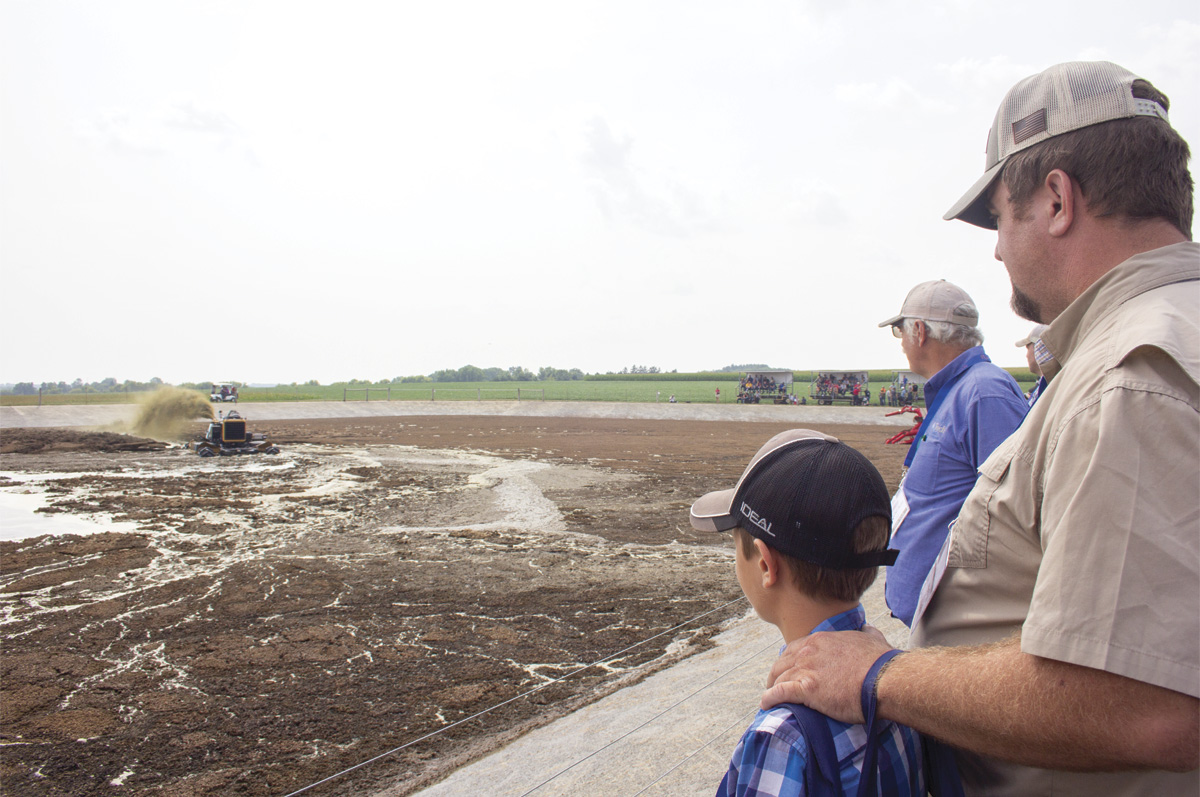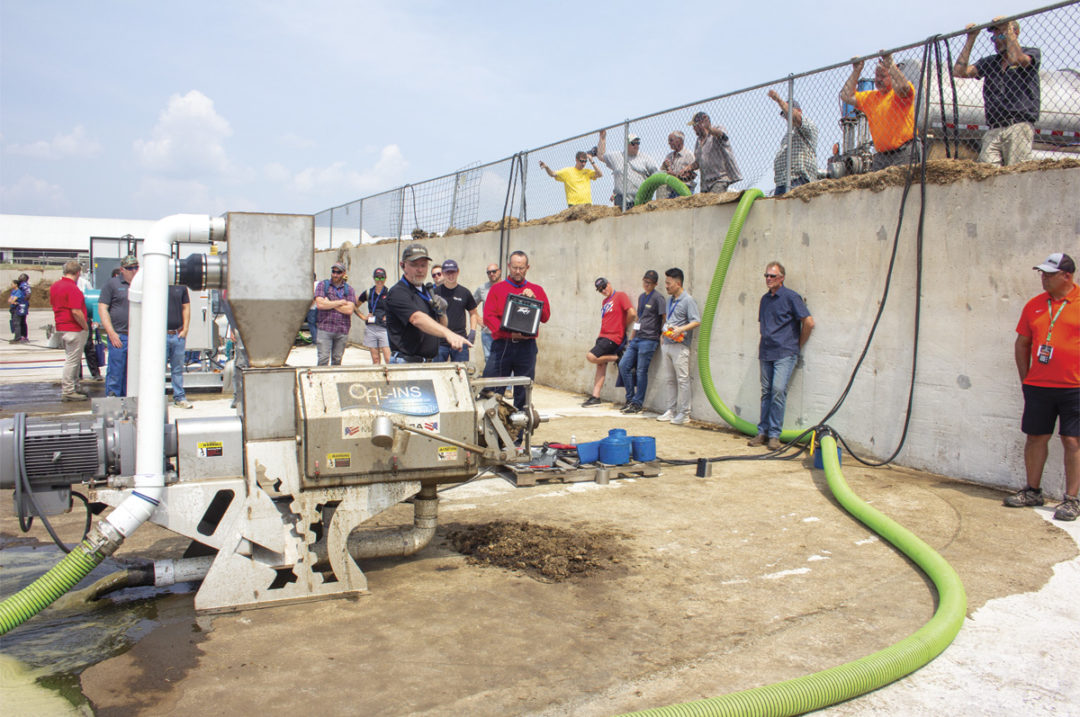Fitting the event’s tagline, “Research. Innovation. Solutions.,” the two-day North American Manure Expo featured groundbreaking research and solutions for manure handling and management, particularly focusing on the agriculture industry’s ever-changing demands of farmers and regulators to provide contemporary solutions for protecting land and water resources.
The event was hosted at the University of Wisconsin – Madison Arlington Research Station Aug. 9-10 in Arlington, Wisconsin.
“The manure expo is a one-of-a-kind event where education and demonstrations for the manure industry are available for farmers, industry and agencies,” said Jerry Clark, 2023 North American Manure Expo chair.
Kevin Erb, co-chair of the event, agreed.
“What’s really exciting is how quickly manure applicators and farmers are adopting technological innovations they saw at the manure expo,” he said.
More than 900 attendees had the opportunity to tour one of three sites highlighting renewable natural gas production, runoff research or manure separation technology, followed by an afternoon of equipment demonstrations for manure separation and agitation, as well as safety. The second day included an assortment of educational sessions and additional demonstrations on safety and manure applications.
Digester facility showcases microgrid design to improve operations
One of three tours during the expo was of a community digester in Middleton, Wisconsin.
This facility takes dairy manure from five area farms and converts the waste into renewable natural gas (RNG). From the process, dried solids are produced and sold as fertilizer, purified water is created and distributed energy is formed.
“What makes this facility most unique is the addition of distributed energy to help lower the facility’s [carbon intensity (CI)] score,” said Jacob Feutz, vice president of renewable fuels with EnTech Solutions. “The real value is in the CI improvements, making our process lower carbon intensive.”
Originally constructed in 2012 through Dane County with intentions of lowering phosphorus levels in the Yahara Watershed, the facility was purchased by EnTech Solutions and Northern Biogas LLC in 2020.
With the use of distributed energy – more than 2 megawatts of solar ground and rooftop mounts – the facility’s CI score ranges from -250 to -150 for the RNG produced, Feutz said.
“That added energy allows us not to tap into grid electricity,” he said. “The RNG produced now has more value, and we can sell it for more money.”

A tour of EnTech Solutions' digester highlighted a first-of-its-kind microgrid designed to lower the facility's carbon intensity score. Photo by Jenn Coyne.
The companies use the facility to produce RNG and distributed energy. While operating as a functional digester site with several byproducts produced, the site is primarily focused on providing examples of how distributed energy can be incorporated into existing or planned RNG facilities.
“We own this facility around demonstrating low CI technology,” Feutz said. “We do things like solar and [electronic vehicle] EV charging to help other existing facilities see how they can lower their CI score.”
Separation demonstrations a first for the expo
A host of companies had the unique opportunity to demonstrate their manure separation equipment. While demonstrations are commonplace at this event, those specific to separation technology had not been observed at previous shows.
The innovative technology presented in each of the four liquid-solid separation demonstrations encompassed the leading ways manure can be separated, and the byproducts of those processes from biomass to be used as a food source or bedding to an option for liquid fertilizer.
Following the separation demonstrations, attendees were encouraged to view the agitation demonstrations at a nearby lagoon. Again, a host of new equipment was presented, including manure agitation boats and pumps for viewers to see the effectiveness of each product for its given purpose.

A host of companies demonstrated their manure agitation equipment. Photo by Jenn Coyne.
“The key to the manure expo is showcasing the latest in manure technology for both medium and larger farms,” Erb said. “Demonstrating the manure separator and manure treatment systems, rapid transfer and dumpsters, and the hose pressure release were new this year and likely to be a part of future expos.”
Manure innovations of the Northeast previewed
In anticipation for next year’s North American Manure Expo, Kirsten Workman of PRO-DAIRY and Jeff Sanders of the University of Vermont Extension highlighted recently completed and upcoming research in the Northeast to preface what attendees may learn more about in 2024.
“In New York and Vermont, water quality is the backbone of manure management,” Workman said. “The area’s challenging climate, soils and regulations have bred innovation in the Northeast. We’re always willing to try something new.”
Sanders agreed, having said the government is active in protecting water and air qualities throughout the Green Mountain State.
“Agriculture land is quite high in the Lake Champlain Basin,” he said. “The state has done a lot of work to clean it up: implement a spreading ban, provide training for farms, require cover crops and subsurface tile drainage. The state also helps farms fund some of these requirements.”
Research recently completed and ongoing in the area includes manure application methods to best meet regulations and retain nutrients after application.
“Manure is expensive to move, expensive to apply and expensive to get,” Sanders said. “We’re losing 40 to 80 percent of ammonium after spreading.”
To combat the loss of ammonium, research has reviewed grassland injection to preserve the nutrient and also extend the application window without damaging the next crop.
“We really think grassland injection is going to be the wave of the future here in Vermont,” Sanders said.
Other research includes nitrogen inhibitors and quantifying greenhouse gas (GHG) emissions from various manure application methods. This past summer, researchers began a trial using biochar to reduce GHG emissions and store carbon in soil.
In New York, the Dairy Soil and Water Regeneration Project studies manure storage and handling and land application specifically as it all relates to GHG emissions.
“We’re trying to quantify GHG emissions from dairy feed production and soil health,” Workman said. “We’re comparing business as usual to other soil health management systems.”
Workman and her colleagues at PRO-DAIRY are also continuing research on the economic feasibility of anaerobic digesters with food waste, now evaluating the concept on varying farm sizes.
The 2024 North American Manure Expo is set for July 17-18 in Auburn, New York.






